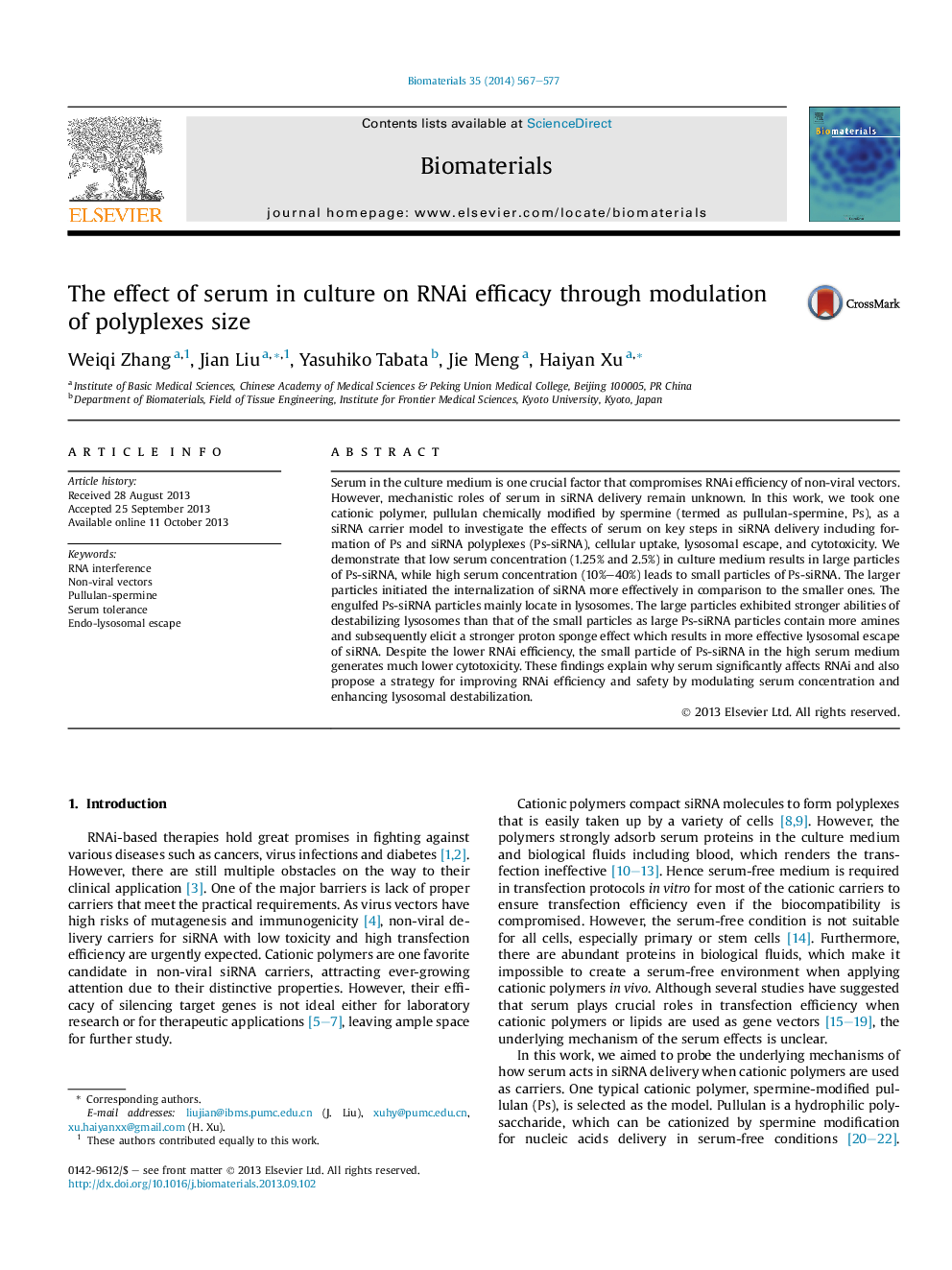| Article ID | Journal | Published Year | Pages | File Type |
|---|---|---|---|---|
| 6246 | Biomaterials | 2014 | 11 Pages |
Serum in the culture medium is one crucial factor that compromises RNAi efficiency of non-viral vectors. However, mechanistic roles of serum in siRNA delivery remain unknown. In this work, we took one cationic polymer, pullulan chemically modified by spermine (termed as pullulan-spermine, Ps), as a siRNA carrier model to investigate the effects of serum on key steps in siRNA delivery including formation of Ps and siRNA polyplexes (Ps-siRNA), cellular uptake, lysosomal escape, and cytotoxicity. We demonstrate that low serum concentration (1.25% and 2.5%) in culture medium results in large particles of Ps-siRNA, while high serum concentration (10%–40%) leads to small particles of Ps-siRNA. The larger particles initiated the internalization of siRNA more effectively in comparison to the smaller ones. The engulfed Ps-siRNA particles mainly locate in lysosomes. The large particles exhibited stronger abilities of destabilizing lysosomes than that of the small particles as large Ps-siRNA particles contain more amines and subsequently elicit a stronger proton sponge effect which results in more effective lysosomal escape of siRNA. Despite the lower RNAi efficiency, the small particle of Ps-siRNA in the high serum medium generates much lower cytotoxicity. These findings explain why serum significantly affects RNAi and also propose a strategy for improving RNAi efficiency and safety by modulating serum concentration and enhancing lysosomal destabilization.
